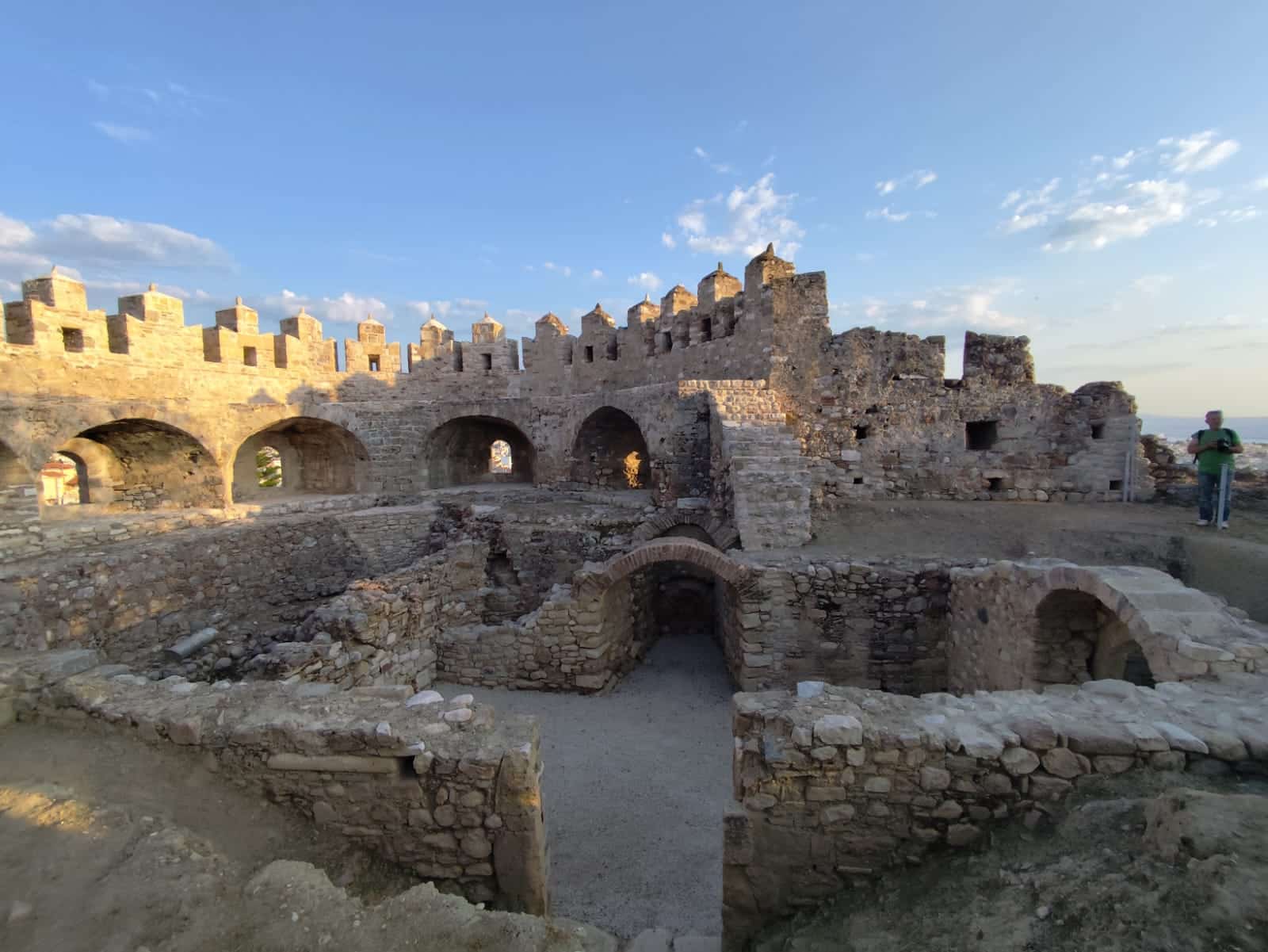

Two historic bastions at Patra Castle in southwestern Greece dating back to the 15th century opened to the public after their restoration by the local ephorate of antiquities.
The restored ramparts feature a Venetian-built southwestern bastion and an Ottoman-constructed southeastern one, showcasing a shift in fortress design with the Venetians’ circular geometry and the Ottomans’ polygonal defenses. The restoration involved stabilizing structures, reinforcing foundations and improving visitor access through landscaping. The restoration project cost 1.2 million euros ($1.37 million) and was funded by the National Strategic Reference Framework and by the Recovery and Resilience Fund.
The handover ceremony took place Friday in the presence of Greek culture minister Lina Mendoni, who called the castle “a symbol of history, memory and cultural continuity,” noting that integrating archaeological sites into urban settings amplifies their value. She also highlighted the castle’s role as a cultural and economic asset for Patras, Greece’s third-largest city in southwestern Peloponnese.
The minister was joined by a number of officials, including deputy culture minister Iason Fotilas and Turkey’s Consul General in Athens.
The Patra Castle restoration is part of a wider strategic plan to promote and showcase castles across western Greece, fostering cultural routes and tourism. It is included in the “Networks of Castles from the Byzantine to the Ottoman Era” cultural path.
With Greece reaching its peak tourist season with millions visiting the country to dive into its rich cultural site, the Acropolis, Greece’s most famous archaeological site, marked a significant expansion of its visitor experience last week with the opening of several new and restored areas, including a particular emphasis on the newly accessible paths along its North Slope.
Rather than settling with a traditional inauguration, the musical group Encardia celebrated the openings with songs and dances from the Greek-speaking regions of Southern Italy, offering a musical walk that culminated at the Sanctuary of Aphrodite and Eros.
These newly opened spaces promise a new era for visitors to the Sacred Rock, offering unprecedented opportunities for exploration and enhanced accessibility to areas that have been closed for decades.

Central to this enhancement is the restored path on the North Slope of the Acropolis. This crucial route now provides public access to a wealth of significant, yet previously often unseen, monuments nestled at the very roots of the Acropolis Rock. Visitors can now embark on a captivating journey to discover:
This opening of the North Slope allows visitors to immerse themselves more deeply in the Acropolis’s natural beauty and rich historical layers, providing a more comprehensive understanding of the site’s multifaceted past.
